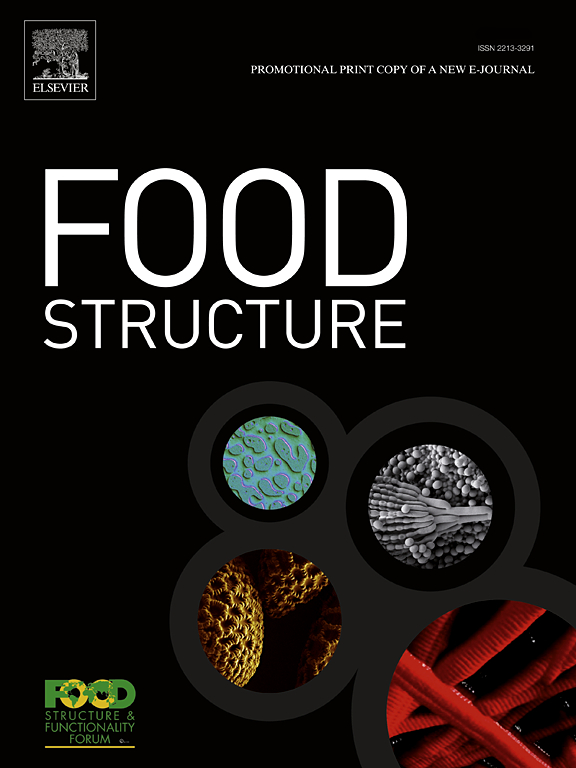Exploration of structural differences between dairy and plant-based cheese
IF 5.9
3区 农林科学
Q1 FOOD SCIENCE & TECHNOLOGY
引用次数: 0
Abstract
The functionality and microstructure of commercial dairy cheese, commercial plant-based cheese, and high-protein plant-based cheese (HPC) were analyzed to explore the structure-function relationship. Commercial dairy cheese exhibited the best functionality, showcasing an ideal texture profile alongside optimal melting and stretch characteristics. In contrast, commercial plant-based cheese showed the least resemblance to dairy cheese, with the lowest melting and stretching properties, as well as considerable structural integrity after heating, marked by the highest G’ and lowest tan δ values. HPC demonstrated notable improvements in textural properties compared to commercial plant-based cheese, indicated by enhanced melting and stretching, lower G’, and higher tan δ, reflecting its viscous nature. The microstructural analysis on cold samples revealed that both dairy and commercial plant-based cheeses contained a high density of small fat globules, while HPC had significantly larger globules and protein aggregates. Upon melting, dairy cheese and HPC displayed similar microstructures, characterized by fat pooling and a yielding continuous matrix, correlating with their melting and stretching abilities. In contrast, the melted commercial plant-based cheese exhibited minimal structural changes from its cold state, indicating that its starch matrix was irreversible and did not yield under heat. Ultimately, to achieve melting and stretching in both dairy and plant-based cheeses, the network must yield upon heating, allowing for fat pooling but maintaining connectivity of the continuous matrix.
探索乳制品和植物奶酪的结构差异
通过对商品乳制品奶酪、商品植物基奶酪和高蛋白植物基奶酪(HPC)的功能和微观结构进行分析,探讨其结构-功能关系。商业乳制品奶酪展示了最好的功能,展示了理想的质地轮廓以及最佳的融化和拉伸特性。相比之下,商品植物奶酪与乳制品奶酪的相似性最小,其熔融和拉伸性能最低,加热后的结构完整性相当好,其G′值最高,tan δ值最低。与商业植物基奶酪相比,HPC的质地性能有显著改善,表现为熔融和拉伸增强,G′更低,tan δ更高,反映了其粘性。对冷样品的微观结构分析显示,乳制品和商业植物基奶酪都含有高密度的小脂肪球,而HPC奶酪的小脂肪球和蛋白质聚集体明显更大。融化后,乳制品奶酪和HPC显示出相似的微观结构,其特征是脂肪池和屈服的连续基质,这与它们的融化和拉伸能力有关。相比之下,融化的商业植物基奶酪在冷状态下表现出最小的结构变化,这表明它的淀粉基质是不可逆的,在加热下不会屈服。最终,为了在乳制品和植物奶酪中实现融化和拉伸,网络必须在加热时屈服,允许脂肪池,但保持连续矩阵的连通性。
本文章由计算机程序翻译,如有差异,请以英文原文为准。
求助全文
约1分钟内获得全文
求助全文
来源期刊

Food Structure-Netherlands
Chemical Engineering-Bioengineering
CiteScore
7.20
自引率
0.00%
发文量
48
期刊介绍:
Food Structure is the premier international forum devoted to the publication of high-quality original research on food structure. The focus of this journal is on food structure in the context of its relationship with molecular composition, processing and macroscopic properties (e.g., shelf stability, sensory properties, etc.). Manuscripts that only report qualitative findings and micrographs and that lack sound hypothesis-driven, quantitative structure-function research are not accepted. Significance of the research findings for the food science community and/or industry must also be highlighted.
 求助内容:
求助内容: 应助结果提醒方式:
应助结果提醒方式:


